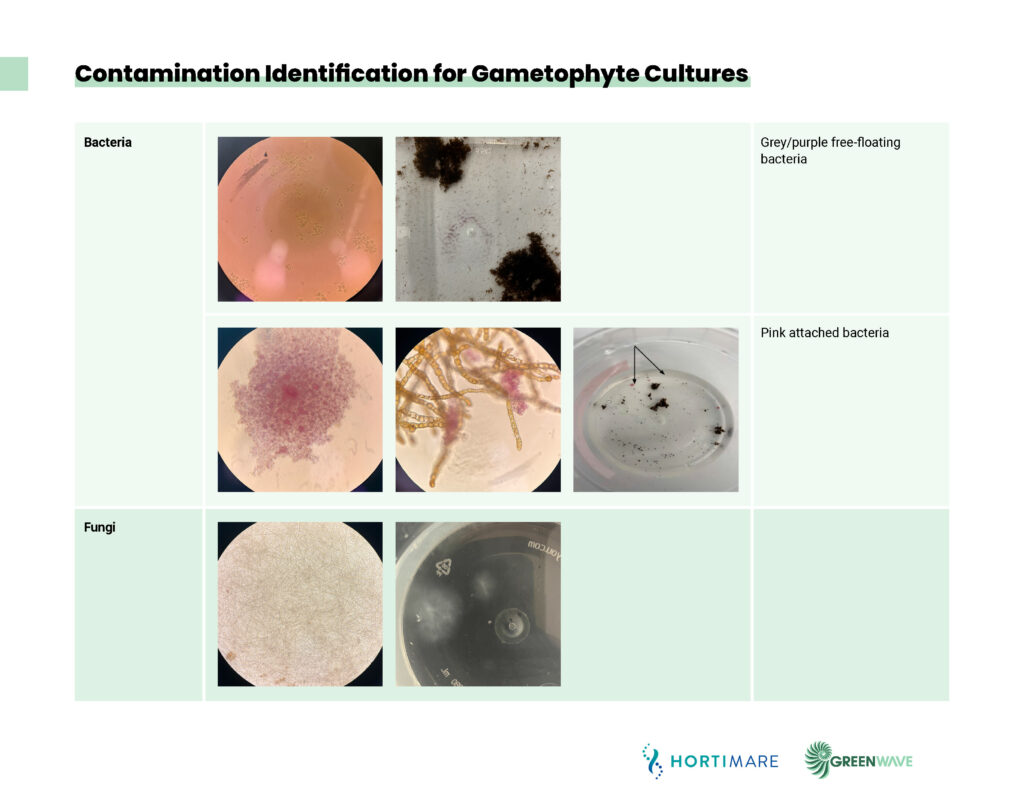Back to: Building a Gametophyte Seed Bank
While steps can be taken to mitigate a contaminated culture, it’s important to build a production system that doesn’t depend on every culture succeeding. Limiting the size of the culture vessels and splitting cultures into multiple vessels reduces the possibility of an entire collection failure and simplifies management of a collection. As a rule, it is easier and less risky to over produce and dispose of cultures that are struggling than it is to remediate contamination. There are times when the need for biomass or a culture from a particular geography or parent requires management of contamination rather than disposal, but these can be minimized by creating smaller replicates of cultures.
Contamination can appear in cultures even after a long time of the culture seeming otherwise clean. Small changes in environmental conditions may trigger outbreaks of certain contaminants. It is important to know how to identify these contaminants before they take over the culture and while they are still treatable. Reference the Contamination Identification for Gametophyte Cultures to learn more about potential contaminants in your cultures. Refer to the “Checking Health of Cultures” lesson for information about how best to check for contamination microscopically.
After identifying your contaminant, you can determine if it is treatable or not. Some types of contaminants can be treated with the addition of chemicals or antibiotics to the media. Other contaminants may be treated by mechanical means like filtering. Still, some contaminants are extremely hard to get rid of and may constitute throwing a culture out. For example, diatom or bacterial outbreaks may be treated with germanium dioxide or antibiotics while microalgal or cyanobacteria contaminations may require pipetting out the contaminate, moving the healthy biomass to a new container, or, if the contaminant is too attached to the gametophytes, throwing out the culture completely. It can be difficult to determine if a contamination outbreak is big enough to warrant throwing out biomass or if the outbreak is still treatable. Reference the Contamination Treatment Chart to help you determine the severity and how to treat a contaminated culture.
